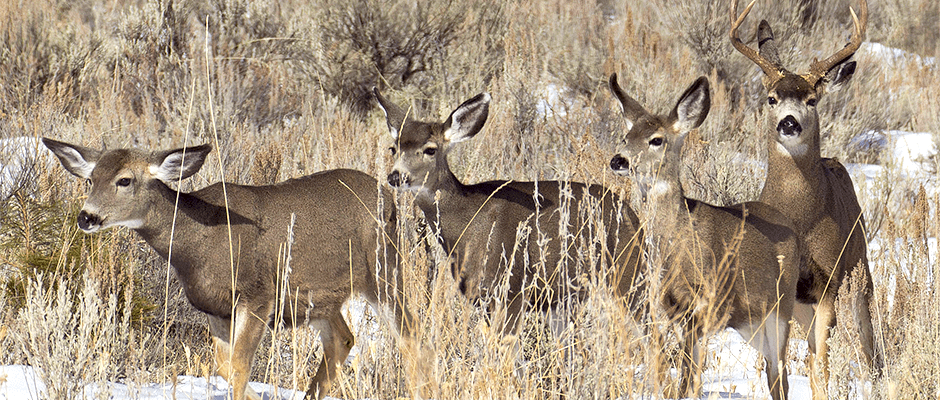Share this article
JWM: Deer study calls into question juniper removal projects
Across the West, land managers are undertaking juniper removal projects in an effort to restore sagebrush landscapes where fire suppression has allowed the plant to take over. The projects are intended to improve areas for sagebrush-dwelling species like greater sage-grouse (Centrocercus urophasianus) and mule deer (Odocoileus hemionus). But a recent study of mule deer calls these projects into question.
Looking at their wintering grounds in south-central Oregon, biologists with the Oregon Department of Fish and Wildlife found mule deer use stands of juniper far more than they expected.
“We actually were a bit surprised,” said Darren Clark, wildlife research program leader with the ODFW and corresponding author of the paper published in the Journal of Wildlife Management. “We were expecting deer to show not as strong a selection for juniper stands. Talking to people on the ground, everybody thought juniper incursion was having a negative effect on mule deer.”
Instead, they found that while the juniper may crowd out the grass and forbs the deer rely on in the winter, it provided other benefits. The curving branches, which can tower up to 50 feet high if left unchecked, may offer cover for the deer, particularly from vehicles passing on nearby roads and off-road vehicle trails. They may also provide some thermal cover, Clark said, and create areas with less snow depth, which allows the deer to travel without spending as much energy as they would in deep snow.
“What we don’t know from our study is if it’s actually beneficial to mule deer populations,” Clark said. “Are they surviving better by using these areas with juniper?”
It’s an important question because mule deer in Oregon, as in much of the West, are struggling due largely to habitat loss. That’s partly because of the incursion of juniper throughout the sagebrush steppe they use as winter habitat, biologists believed. Due to fire suppression, wildfires that once limited the spread of juniper have decreased.
Land managers throughout the West have increasingly turned to largescale juniper removal projects improve habitat for mule deer, sage-grouse and other sagebrush-dependent species.
“These findings call into question” those projects, the researchers concluded.
A better approach may be to leave juniper in steeper areas that mule deer use but sage-grouse avoid, Clark said, but removing it from flatter areas the sage-grouse occupy. “A mosaic of habitat conditions is probably best,” he said. Although deer use the juniper more than expected, he said, they seek out edges to forage for shrubs, grass and forbs where juniper is less prevalent.
Since the study was based on observation, Clark said he would like to see future experimental research comparing mule deer success in treated versus untreated areas. “If we removed the juniper,” he asked, “would they do things differently?”
TWS members can log in to Your Membership to read this paper in the Journal of Wildlife Management. Go to Publications and then Journal of Wildlife Management.
Header Image:
Projects throughout the West are clearing juniper from the sagebrush landscapes that make up mule deer’s winter range, but a recent study found the deer use the juniper more than researchers expected.
©Oregon Department of Fish and Wildlife








